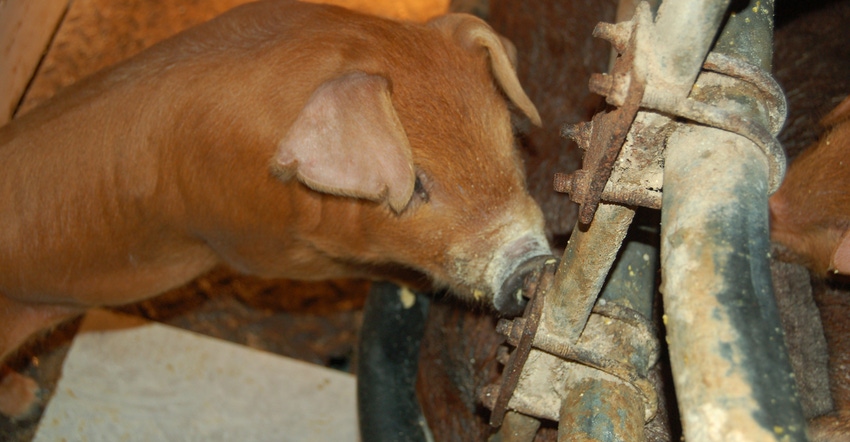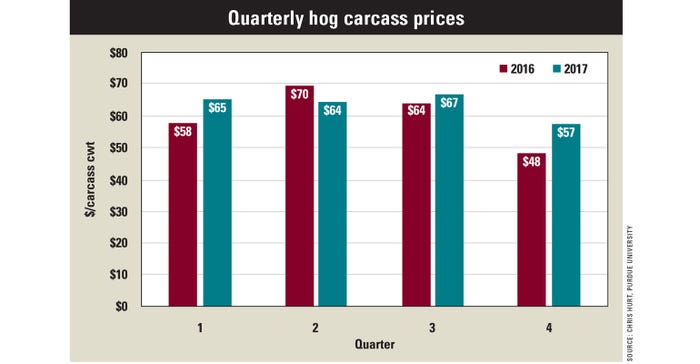May 2, 2017

By Chris Hurt
There are two positive characteristics of this year’s pork outlook. First, there’s going to be plenty of pork for consumers. Second, it looks like producers will cover what I estimate to be full costs of production for the average farm.
Pork supply will grow by around 3% in 2017. The industry has been increasing the sow herd since 2014 as costs of feed have come down. In recent updates from USDA, the breeding herd had expanded by 1% in the past year, and by 4% since 2014. In addition to a growing sow herd, pigs weaned per litter have continued to grow by over 1% per year.
One reason for strong usage is that retail pork prices have moved downward since 2014. When pork is lower-cost, shoppers tend to buy more of it. Retail pork prices peaked in September 2014 at $4.22 per pound for an average retail cut as estimated by USDA. These prices moved as low as $3.58 early in 2017. For the year, retail prices may average around $3.75 to $3.80..
Another reason for more usage is the U.S. population growth — at about 1% per year. That absorbs nearly 1% of the larger pork supply.
Foreign markets
We can also look to our foreign buyers for help with our large supplies. The industry is expected to export 22% of production. Exports are anticipated to rise by over 8%, and imports could fall by 4%. This combination accounts for about 2% of the 3% greater supply. Therefore, domestic population growth and greater trade will absorb the 3% greater supply.
The current year has brought an optimistic U.S. economy. This means more households with more money to spend. The stock market has also been strong in portions of 2017. That supports consumer spending when those holding stock feel this “wealth effect.”
Packer capacity
Carcass prices for hogs are expected to average near $64 in 2017, up from an average close to $60 in 2016. Summer prices are expected to average in the mid-$60, but drop to the higher $50s for the last quarter of 2017. The last quarter of the year is expected to see prices sharply higher than in late 2016, when carcass prices averaged only $48. It’s thought that those low prices were related to shortness of packer capacity. With two new plants coming online in the second half of 2017, I anticipate stronger hog bids compared to 2016.
My estimate of annual total costs of production is around $65 on a carcass basis. This is close to the anticipated annual price of $64. Total costs includes all family and hired labor, depreciation for buildings and equipment, and a return to equity investment. It looks like a decent financial year, especially given 3% more pork!

Hurt is a Purdue University Extension ag economist. He writes from West Lafayette, Ind.
You May Also Like




